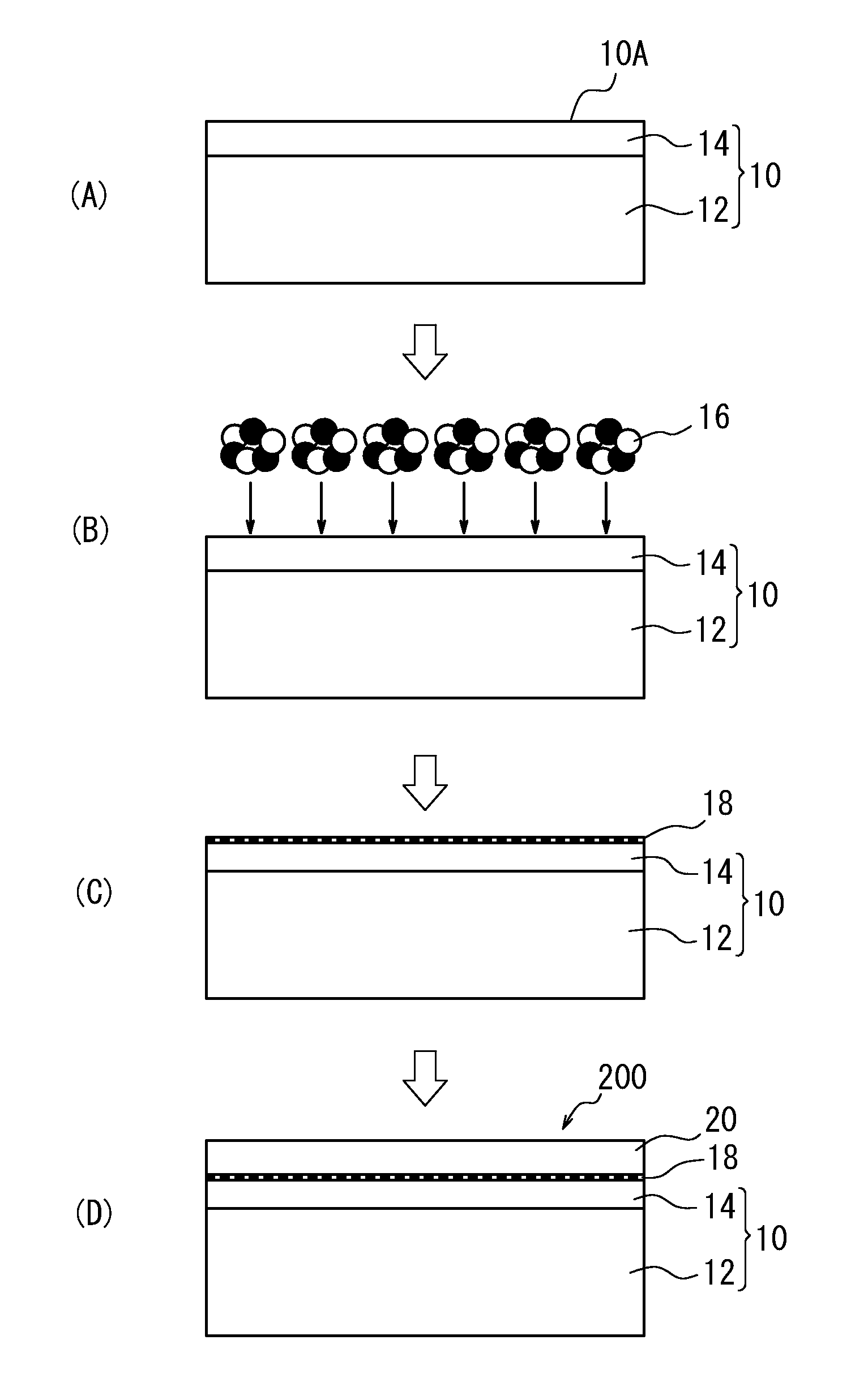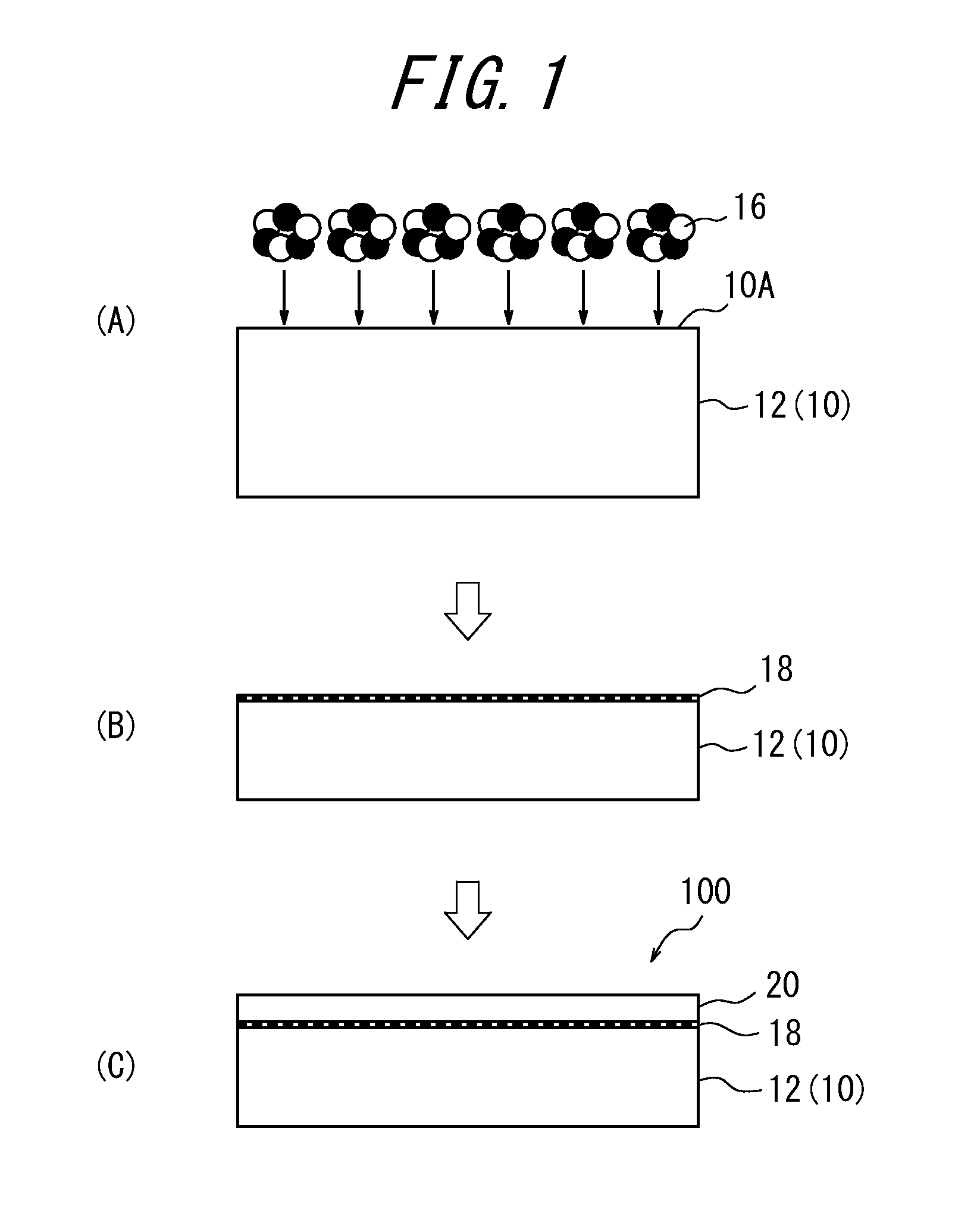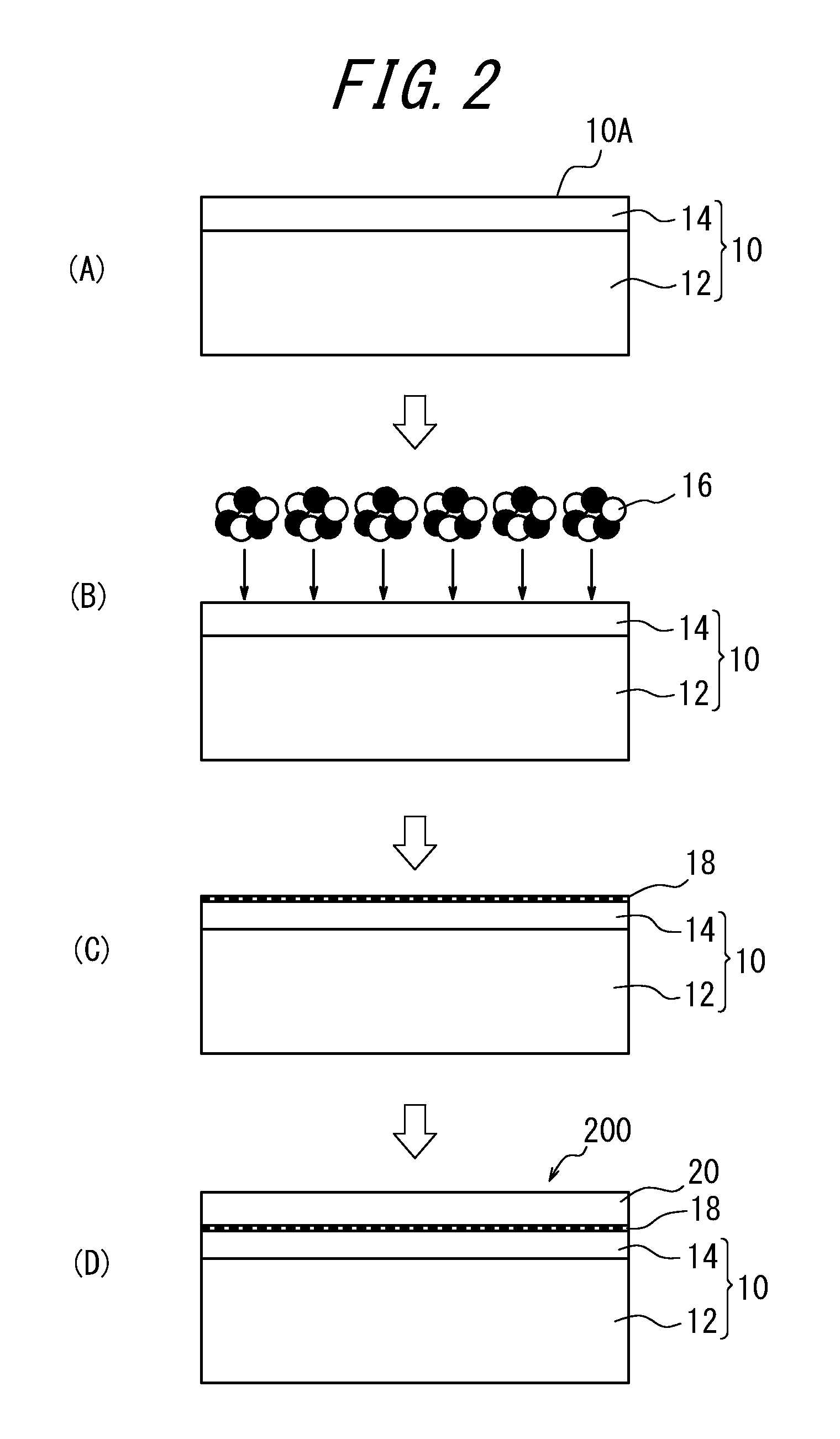Method of producing semiconductor epitaxial wafer, semiconductor epitaxial wafer, and method of producing solid-state image sensing device
a semiconductor and epitaxial technology, applied in the direction of semiconductor devices, electrical equipment, radio frequency controlled devices, etc., can solve the problems of deteriorating the characteristics of semiconductor devices, increasing dark, and metal contamination, so as to reduce the damage of crystals, suppress metal contamination, and achieve the effect of high gettering capability
- Summary
- Abstract
- Description
- Claims
- Application Information
AI Technical Summary
Benefits of technology
Problems solved by technology
Method used
Image
Examples
experimental example 1
Example 1-1
[0071]An n-type silicon wafer (thickness: 725 μm, kind of dopant: phosphorus, dopant concentration: 1×1015 atoms / cm3) obtained from a CZ crystal was prepared. Next, cluster ions were generated using a cluster ion generator (CLARIS produced by Nissin Ion Equipment Co., Ltd.) under the conditions shown in Table 1, and the silicon wafer was irradiated with the cluster ions. After that, recovery heat treatment under the conditions shown in Table 1 was performed using an RTA apparatus (produced by Mattson Thermal Products GmbH) as a heat treatment sufficient for recovering the crystallinity disrupted by the irradiation with cluster ions. Subsequently, the silicon wafer was transferred into a single wafer processing epitaxial growth apparatus (produced by Applied Materials, Inc.) and subjected to hydrogen baking at 1120° C. for 30 s in the apparatus. A silicon epitaxial layer (thickness: 4 μm, kind of dopant: phosphorus, dopant concentration: 1×1015 atoms / cm3) was then epitaxia...
examples 1-2 to 1-4
[0072]Silicon epitaxial wafers in accordance with the present invention were prepared in the same manner as Example 1-1 except that the cluster ion irradiation conditions and the recovery heat treatment conditions were changed as shown in Table 1. In Examples 1-2 and 1-4, recovery heat treatment using an RTA apparatus was not performed. The irradiation with cluster ions was performed at 80 keV / Cluster in Examples 1-1 to 1-4. The clusters each include three carbon atoms (atomic weight: 12) and three hydrogen atoms (atomic weight: 1). Therefore, the energy received by one carbon atom was 80×{12×3 / (12×3+1×3)} / 3=24.6 keV.
experimental example 2
Example 2-1
[0083]An n-type silicon wafer (thickness: 725 μm, kind of dopant: phosphorus, dopant concentration: 1×1015 atoms / cm3) obtained from a CZ crystal was transferred into a single wafer processing epitaxial growth apparatus (produced by Applied Materials, Inc.) and subjected to hydrogen baking at 1120° C. for 30 s in the apparatus. A first epitaxial layer of silicon (thickness: 0.3 μm, kind of dopant: phosphorus, dopant concentration: 1×1015 atoms / cm3) was then epitaxially grown on the wafer by CVD at 1150° C. using hydrogen as a carrier gas and dichlorosilane as a source gas. Next, cluster ions were generated using a cluster ion generator (CLARIS produced by Nissin Ion Equipment Co., Ltd.) under the conditions shown in Table 2, and the first epitaxial layer was irradiated with the cluster ions. After that, recovery heat treatment under the conditions shown in Table 2 was performed using an RTA apparatus (produced by Mattson Thermal Products GmbH) as a heat treatment sufficien...
PUM
 Login to View More
Login to View More Abstract
Description
Claims
Application Information
 Login to View More
Login to View More - R&D
- Intellectual Property
- Life Sciences
- Materials
- Tech Scout
- Unparalleled Data Quality
- Higher Quality Content
- 60% Fewer Hallucinations
Browse by: Latest US Patents, China's latest patents, Technical Efficacy Thesaurus, Application Domain, Technology Topic, Popular Technical Reports.
© 2025 PatSnap. All rights reserved.Legal|Privacy policy|Modern Slavery Act Transparency Statement|Sitemap|About US| Contact US: help@patsnap.com



